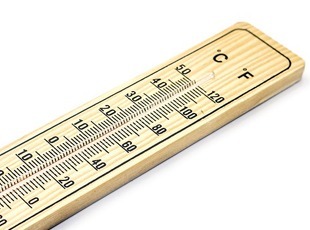You can’t control the weather, but you can control how workers are exposed to it. Each year, thousands of workers—especially those in agriculture, construction, and forestry—fall ill due to one of the most preventable hazards in the workplace.
With summer coming up and the weather already surpassing ninety degrees in some states, it’s time to reevaluate your heat illness plan and learn how to protect workers.
Exposure to Environmental Heat
Outdoor workers are exposed to two forms of heat stress:
- Internal metabolic (body) heat generated by exertion (hard physical labor): Physical exertion, Use of bulky or non-breathable protective clothing and equipment
- Environmental heat arising from working conditions: High temperature and humidity, Radiant heat sources, Contact with hot objects, Direct sun exposure (with no shade), Limited air movement (no breeze, wind or ventilation)
But there’s more to heat stress than that. The next few weeks will be the most tenuous, as employees are not acclimated to the weather conditions and heat stress effects are exacerbated until bodies become acclimated.
Heat Related Illnesses and Symptoms
Once someone’s body is exposed to heat or exertion, the first thing the body does is sweat and increase blood flow to the skin. Once this becomes no longer effective, symptoms of heat related illness begin to develop, and workers begin to develop one of the three degrees of heat related illness: Heat cramps, heat exhaustion, and heat stroke.
- Heat Cramps: Heat cramps are the mildest form of heat injury and consist of painful muscle cramps and spasms that occur during or after intense labor in high heat.
- Symptoms: Painful cramps, especially in the legs; flushed, moist skin
- Heat Exhaustion: Heat exhaustion is more severe than heat cramps and results from a loss of water and salt in the body. Heat exhaustion occurs when the body is unable to cool itself properly and, if left untreated, can progress to heat stroke.
- Symptoms: Muscle cramps; pale, moist skin; fever; nausea; vomiting; anxiety; weakness; fatigue; headache; diarrhea
- Heat Stroke: Heat stroke, the most severe form of heat illness, occurs when the body’s heat-regulating system is overwhelmed by excessive heat. It is a life-threatening emergency and requires immediate medical attention.
- Symptoms: Warm, dry skin; high fever, usually over 104° F (or 40° C); Rapid heart rate; Loss of appetite; Nausea; Vomiting; Headache; Fatigue; Confusion; Agitation; Lethargy; Stupor; Seizures, coma, and death are possible
For more detail on symptoms, view the Johns Hopkins Medicine article on heat related illnesses
How to Prevent Heat Related Illness
The best way to avoid heat cramps, heat exhaustion, and heat stroke is to be proactive. Start by acclimating employees to increased heat by providing increased break and lighter workloads for about four days to prepare employees’ bodies for upcoming heat.
Knowing the weather forecasted for the day and the expected heat index before the day starts is the first step to preventing heat related illness.
The following chart, provided by the National Weather Service, highlights the heat index, based on temperature and humidity; as well as the likelihood of dangers. As an example, if the air temperature is 96°F and the relative humidity is 65%, the heat index–how hot it feels—is 121°F. This rises further in the case of extreme and direct sunlight, which can increase perceived temperature by 15 degrees.
Employer Responsibilities
When the heat index is expected to be dangerous, employers must protect employees. NIOSH recommends that employers establish a heat-related illness prevention program that includes the following measures:
- Training for supervisors and workers to prevent, recognize, and treat heat-related illness
- Implementing a heat acclimatization program for workers
- Providing for and encouraging proper hydration with proper amounts and types of fluids
- Establishing work/rest schedules appropriate for the current heat stress conditions (an industrial hygienist may need to be consulted)
- Ensuring access to shade or cool areas
- Monitoring workers during hot conditions
- Providing prompt medical attention to workers who show signs of heat-related illness
- Evaluating work practices continually to reduce exertion and environmental heat stress
- Monitoring weather reports daily and rescheduling jobs with high heat exposure to cooler times of the day
Employee Recommendations
Employees are also urged to protect themselves. To protect yourself as an employee, do the following:
- Drink water or other liquids frequently enough to never become thirsty (about 1 cup every 15–20 minutes). Hydration is the most important tool in preventing heat-related illness, and workers should try to be well-hydrated before arriving at work.
- Eat during lunch and other rest breaks. Food helps replace lost electrolytes.
- Wear light-colored, loose-fitting, breathable clothing such as cotton.
- Wear a wide-brimmed hat when possible.
- Take breaks in the shade or a cool area when possible.
- Be aware that protective clothing or personal protective equipment may increase the risk of heat stress.
- Monitor their physical condition and that of coworkers.
- Tell their supervisor if they have symptoms of heat-related illness.
- Talk with their doctor about medications they are taking and how the medications may affect their tolerance of heat.
In the Case of a Heat Illness Emergency
If an employee begins to display symptoms, quick action can prevent symptoms from worsening.
Move the employee to a cool place, provide a sports drink to replenish electrolytes, remove excess clothing, and place cool cloths on the skin.
If it worsens or the employee is unable to drink, transport him or her to an emergency room immediately. Heat stroke is a life-threatening emergency.
Related Heat Illness Resources
- OSHA Campaign to Prevent Heat Related Illness in Outdoor Workers
- Cal-OSHA eTool to Prevent Heat Illness
- Texas Heat Stress Fact Sheet
- Heat Fatality Interactive Map (2008-2014)
- NIOSH Heat Illness Guide
Optimum Safety Management can help you develop a safety program to protect workers from a wide variety of illnesses—including heat. Learn more about our proprietary Safety Management System Assessment, and contact us for more information.









